Today I started experimenting with different methods of how I could create this mammoth book out of pages from pre-existing books.
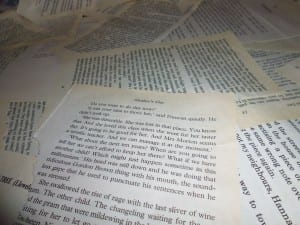 |
| Firstly I started by gluing pages from different books together to create a disjointed effect. I wanted the text to still be readable as I feel seeing as it is a ‘book rug’, fragments of certain stories should be able to be read. After a while I began to tear the pages before adding them to the created section. This gave the paper an interesting visual texture, and it is one which I think will stay in the final piece. |
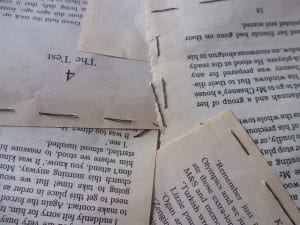 |
| Secondly, I began to stitch certain segments of the piece together. Although origami and other paper creations tend to look as natural as possible, the stitching here represents the binding of a book. Books are bound: be it spiral, glued or stitched, and this handmade feel really works in adding to the atmosphere I wish to create. When you read a book/novel/poem/fact/fiction, you carry a part of that book around with you, and over time stories and facts bleed into one another, slowly creating their own narrative. The stitching here unnaturally joins multiple stories within one unique creation. |
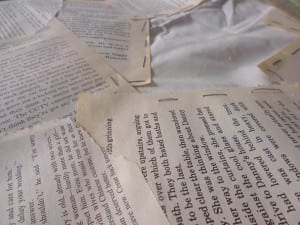 |
| Finally, combining both techniques I decided to add material to the attached pages. The reason for this is because this mammoth book is being transformed from a duvet, so to have no hint of the previous duvet I feel would detract from the piece. By still using the stitching to attach the material to the pages and certain pages to each other, the notion of a disjointed narrative is still apparent while showing the personal and home-made feel of story telling. For this technique to be successful more than one ‘page’ will be needed – this is to allow for accidental rips by audience members so the illusion of a book remains intact, even if the pages don’t. |
| Origami |
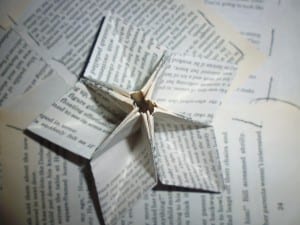 |
| One new skill I am having to learn and perfect as this process continues is origami. Creating 3D objects from paper is a skill in itself, however when the scale is increased, so is the difficulty. Here is an example of a small scale 5-point-star. These will be the most repeated motif within my solo performace, as the book I am exploring within the space is The Fault in Our Stars (2012) by John Green. Drawing on inspiration from Sarah Lewis’ set designs (https://soloperformancewatsonl.blogs.lincoln.ac.uk/?p=78) as well as sculptures such as Emma Taylor, this world made from paper should look impressive in size, although perhaps not as intricate in detail, as I want the home-made feel to flow throughout the piece. |
| Examples of Emma Taylor’s Work |
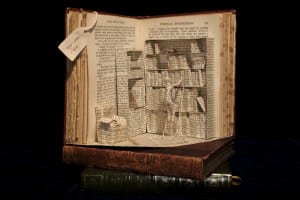 |
|
Taylor, Emma (N/A) Book Sculpture 06, Online: http://s3-ec.buzzfed.com/static/enhanced/webdr06/2013/6/26/13/enhanced-buzz-5892-1372267977-17.jpg [accessed: 01 April 2014].
|
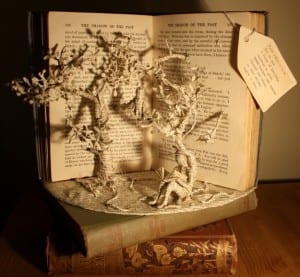 |
|
Taylor, Emma (N/A) Book Sculpture 01, Online: http://s3-ec.buzzfed.com/static/enhanced/webdr02/2013/6/26/13/enhanced-buzz-15802-1372268110-5.jpg [accessed: 1 April 2014].
|

